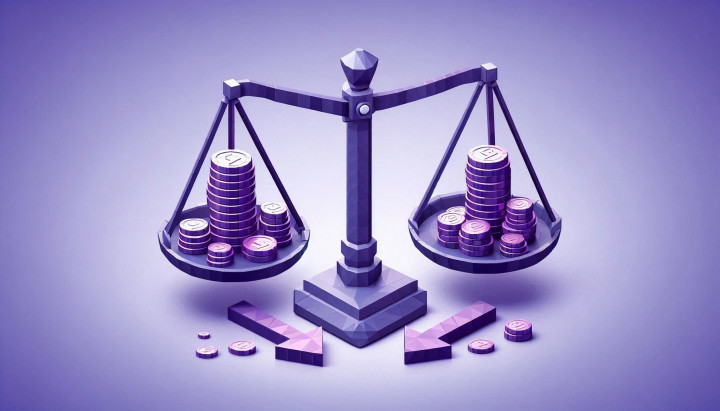The Trachtenberg System of Mental Calculation
The Trachtenberg System, developed by the Russian engineer Jakow Trachtenberg during his imprisonment in Nazi concentration camps, is a rapid mental calculation method that has fascinated mathematicians and students alike. This innovative approach to arithmetic, which eliminates the need for multiplication tables and relies only on basic counting skills, promises greater speed, accuracy, and ease in performing calculations.

The system comprises easily memorized operations that enable users to "read" numbers and perform complex calculations with remarkable efficiency, offering an attractive alternative to traditional arithmetic methods.
The Origin of the Trachtenberg System
The Trachtenberg System was born during the darkest days of World War II in the mind of Jakow Trachtenberg, a brilliant Russian engineer imprisoned in Nazi concentration camps. Facing the brutal hardships of confinement, Trachtenberg developed this rapid mental calculation method to occupy his mind and maintain hope. After his release, he founded the Mathematical Institute in Zurich, Switzerland, where he further refined and taught his innovative system.
Trachtenberg's story is an inspiring example of how creativity and innovation can arise even in the most horrific circumstances. Developing the system was not just a survival strategy for him but a tool that would later revolutionize mental calculation methods.
Key Features and Techniques of the System
The Trachtenberg System relies on a set of memorized "keys" that allow for rapid calculations without traditional multiplication tables. The system includes a general method applicable to any multiplication, division, and addition problem. However, its real speed often comes from specific, optimized rules for multiplying by particular digits. It features distinct, easy-to-learn algorithms for multiplying by numbers 3, 4, 5, 6, 7, 8, 9, 11, and 12, which are often faster to apply than the general multiplication rule. The main features of the system include:
- Breaking down complex calculations into simpler steps
- Consistent algorithms for every arithmetic operation
- Focus on increasing speed and accuracy in problem-solving
Users can perform lightning-fast calculations by "reading" the numbers and applying the system's logical rules, which are mastered through regular practice and internalization of the methods.
Example: Applying the Trachtenberg Rule for Multiplying by 12
The Trachtenberg system uses unique rules. Let's illustrate this with the rule for multiplying by 12, using 341 x 12 as an example. The rule is: "Start from the right. Double each digit and add its neighbor to the right." (Assume zeros to the left and right of the number as needed).
Let's apply this to 341 (visualize it as 03410, where the added zeros are placeholders):
- Rightmost digit (1): Its neighbor to the right is 0.
- Double 1 (which is 2) + neighbor 0 = 2.
- The last digit of the result is 2.
- Next digit (4): Its neighbor to the right is 1.
- Double 4 (which is 8) + neighbor 1 = 9.
- The next digit of the result is 9.
- Next digit (3): Its neighbor to the right is 4.
- Double 3 (which is 6) + neighbor 4 = 10.
- Write down 0, carry over 1.
- Next digit (0 - the leading zero): Its neighbor to the right is 3.
- Double 0 (which is 0) + neighbor 3 = 3.
- Add the carry-over 1: 3 + 1 = 4.
- The first digit of the result is 4.
Reading the result digits from left to right: 4092. So, 341 x 12 = 4092.
This example demonstrates how the system uses a specific algorithm, different from traditional methods, relying on simple steps like doubling and adding neighbors. While this specific rule is for multiplying by 12, similar unique rules exist for other digits and for general multiplication.
Advantages of the Trachtenberg System
The Trachtenberg System offers several key advantages in the realm of mental calculation:
- Increased speed and accuracy in arithmetic calculations
- Improved concentration and memory skills
- Enhanced problem-solving abilities and mathematical confidence
- Elimination of the need for multiplication tables
- Applicability to a wide range of calculations, from simple to complex
By breaking down complex problems into simpler steps and applying consistent algorithms, the system enables users to perform calculations more efficiently than with traditional methods. This approach not only speeds up mental math but also fosters a deeper understanding of the relationships between numbers, potentially improving overall mathematical skills.
Applications in Education and Professional Fields
The Trachtenberg System has found applications in both educational settings and professional fields:
Education
In schools, the system has been used to transform the learning experience for students who previously struggled with arithmetic. Children who had repeatedly failed in traditional math classes showed remarkable improvement after learning the Trachtenberg method. Not only did their calculation skills improve, but their confidence and overall academic performance also increased.
The method helps students to:
- Calculate faster and more accurately
- Develop their concentration skills
- Increase their interest and confidence in mathematics
Professional Applications
In professional contexts, the system's rapid calculation techniques prove valuable in fields requiring quick mental math, such as:
- Engineering: Quick estimates and on-the-spot calculations
- Finance: Instant financial calculations and forecasts
- Data Analysis: Rapid data pattern recognition and summation
- Commerce: Quick pricing and discount calculations
The ability to perform fast, accurate calculations without relying on calculators can provide a significant advantage in time-sensitive situations. Furthermore, the system's emphasis on mental calculation helps develop cognitive skills like concentration and memory, which are beneficial across many professions.
Criticisms and Limitations of the Trachtenberg System
While the Trachtenberg System offers numerous benefits, it's important to acknowledge some criticisms and limitations:
- Learning Curve: Mastering the system requires a significant investment of time and practice, which can be daunting for some.
- Applicability: While effective for many calculations, it is not equally well-suited for every type of mathematical problem.
- Understanding vs. Rote Calculation: Some critics argue that the system focuses too heavily on mechanical calculation at the expense of deeper mathematical understanding.
- Technological Advancement: In the age of modern calculators and smartphones, some question the relevance of rapid mental calculation techniques.
Nevertheless, the system remains a valuable tool for those wishing to improve their mental calculation skills and mathematical confidence.
Conclusion
The Trachtenberg System of mental calculation is a fascinating example of how a fundamental skill like arithmetic can be revolutionized. The method not only increases the speed and accuracy of calculation but also develops concentration, memory, and problem-solving skills. While it doesn't replace a deeper understanding of mathematics, it can serve as a valuable complementary tool in both education and professional life.
The history and application of the Trachtenberg System remind us that innovation often arises in the most unexpected places and that the human mind is capable of extraordinary feats even under the most challenging circumstances. Whether you are a student or a professional, mastering the Trachtenberg method can be an interesting challenge that enhances mathematical skills and pushes the boundaries of mental capabilities.





